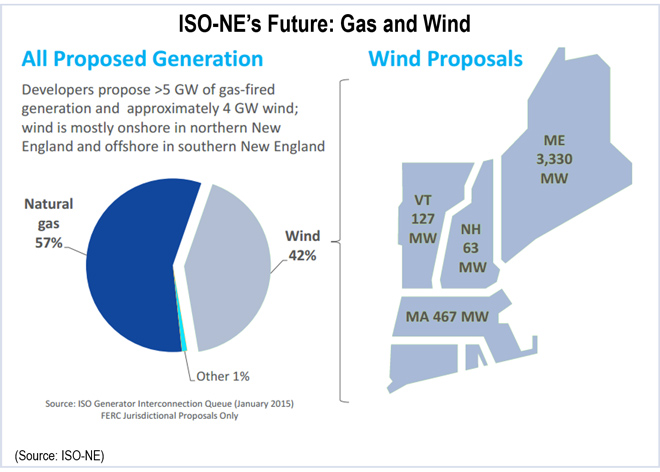By Rich Heidorn Jr.

PJM officials also told FERC in the third of four technical conferences on the Clean Power Plan that states that rebuff regional efforts to price CO2 emissions could overwhelm the RTO’s economic dispatch software, undermining reliability.
That’s not an issue for New York and the six New England states, which are members of the Regional Greenhouse Gas Initiative (along with Maryland and Delaware in PJM). Officials of those states see RGGI’s cap-and-trade program as central to their states’ compliance.
Robert Ethier, vice president of market development for ISO-NE, said the RTO’s LMP energy market and forward capacity market, combined with RGGI, gives the region the tools it needs to comply “efficiently.”
RGGI the Right Tool
“RGGI seems like exactly the right mechanism to resolve this issue,” Ethier said.
Andy Ott, PJM’s executive vice president for markets, said the RTO’s regional dispatch can help reduce emissions either through an explicit carbon price or through run-time limitations on generators.
But Ott said PJM officials are concerned that if too many states choose run-time limits, it would result in “discontinuities” in the regional market that could threaten operating reliability.
“If a lot of states decide to put in physical limitations, it could actually create a situation where, more often than not, we can’t solve [dispatch] economically anymore, so then we have to go into … emergency dispatch. … That could affect reliability.”
Despite their concerns, RTO and state officials expressed far more confidence than state and utility officials from the Southeast, who also testified at the hearing. They also were more sanguine than several of the state officials who testified before a U.S. Senate hearing the same day. (See related stories, Debate over Cost, Impact of EPA Plan in Southeast and FERC Seeking Its Role on Carbon Rule ‘Safety Valve’.)
Flexibility on Deadlines

Such a change in the generation mix will require a “significant transmission build out,” Rourke said. He noted the combined solicitation planned by Connecticut, Massachusetts and Rhode Island for more than 2,300 GWh of renewable energy annually and transmission to deliver it. (See New England States Combine on Clean Energy Procurement.)
The region’s best wind assets are in Maine and elsewhere in northern New England, many of them 100 miles from the existing transmission network, he said.
“We’re sort of far down the road toward meeting the requirements of the Clean Power Plan, but when you look forward there may be a few speed bumps in the road,” Rourke said.
Among those concerns, he said, are retirements of oil- and coal-fired generation, which will create a need for more gas pipeline and storage capacity. He also said the retirement of the Vermont Yankee nuclear plant raises questions about the viability of the region’s four remaining nuclear plants, which produce about one-quarter of its energy. “That’s a big question mark going forward,” he said.
Unrealistic Emission Rate
Rana Mukerji, NYISO’s senior vice president for market structures, said New York’s markets “are well structured to comply” with the rule but that EPA needs to provide the state “a more realistic emission rate.”
Mukerji said EPA’s proposed 549 lb/MWh rate is about half that of neighboring Pennsylvania (1,052 lb/MWh) and the limit on new combined-cycle gas turbines (1,000 lb/MWh).
That is not achievable in downstate New York, particularly New York City, which he said relies on dual fuel fossil units to meet needs on peak days. In 2012, Mukerji said, the city needed dual-fuel units for more than 14 peak days; EPA’s proposed rule envisions such units being called on only three times a year, he said.


